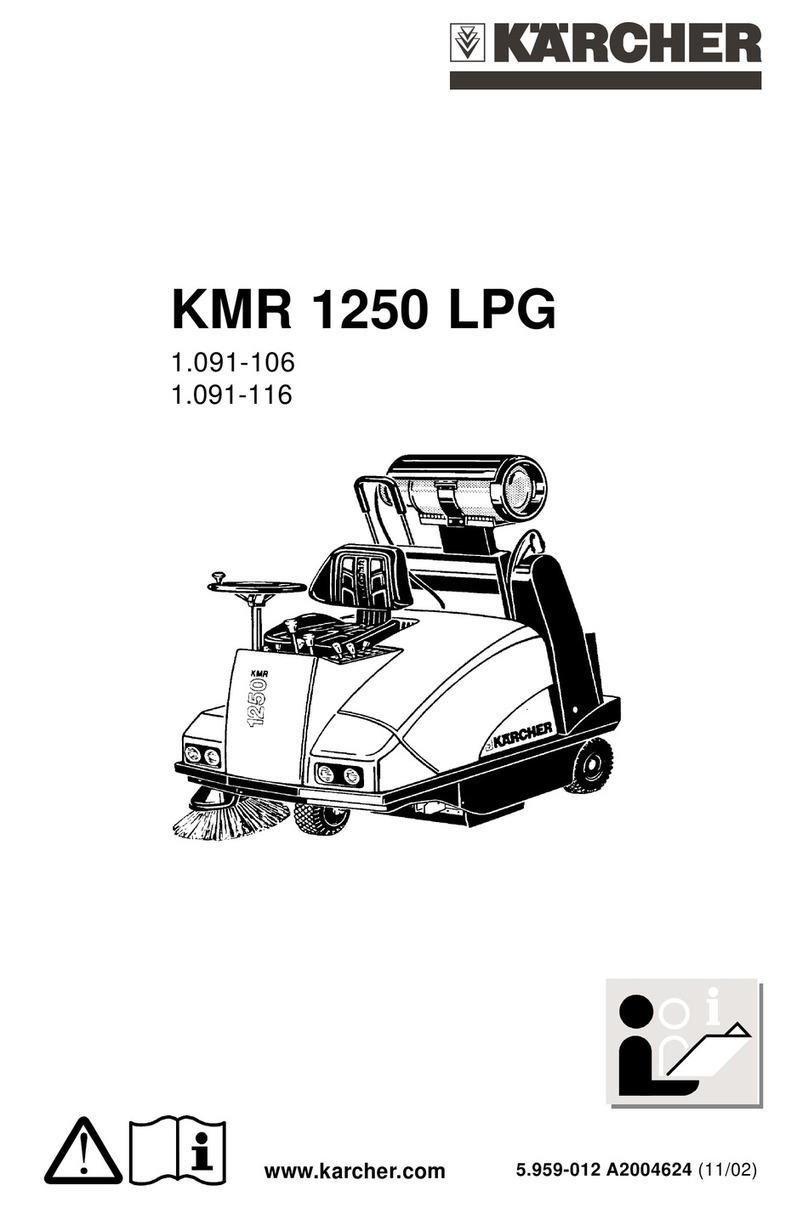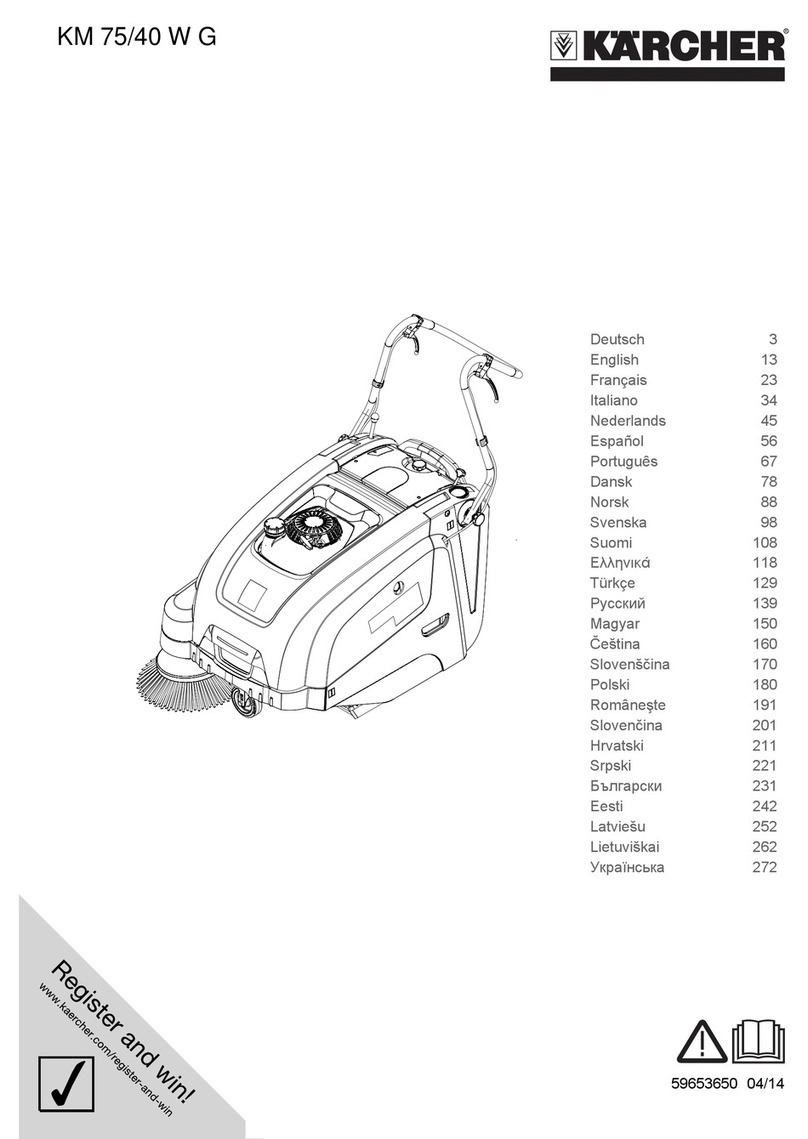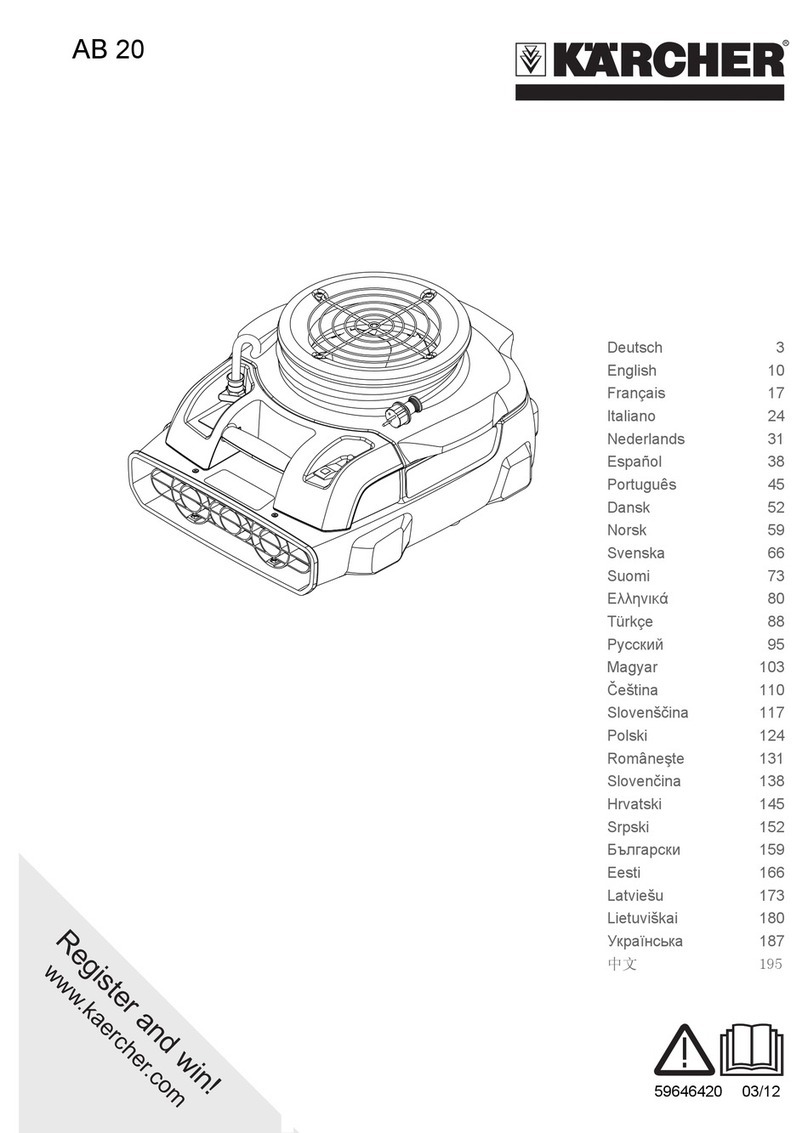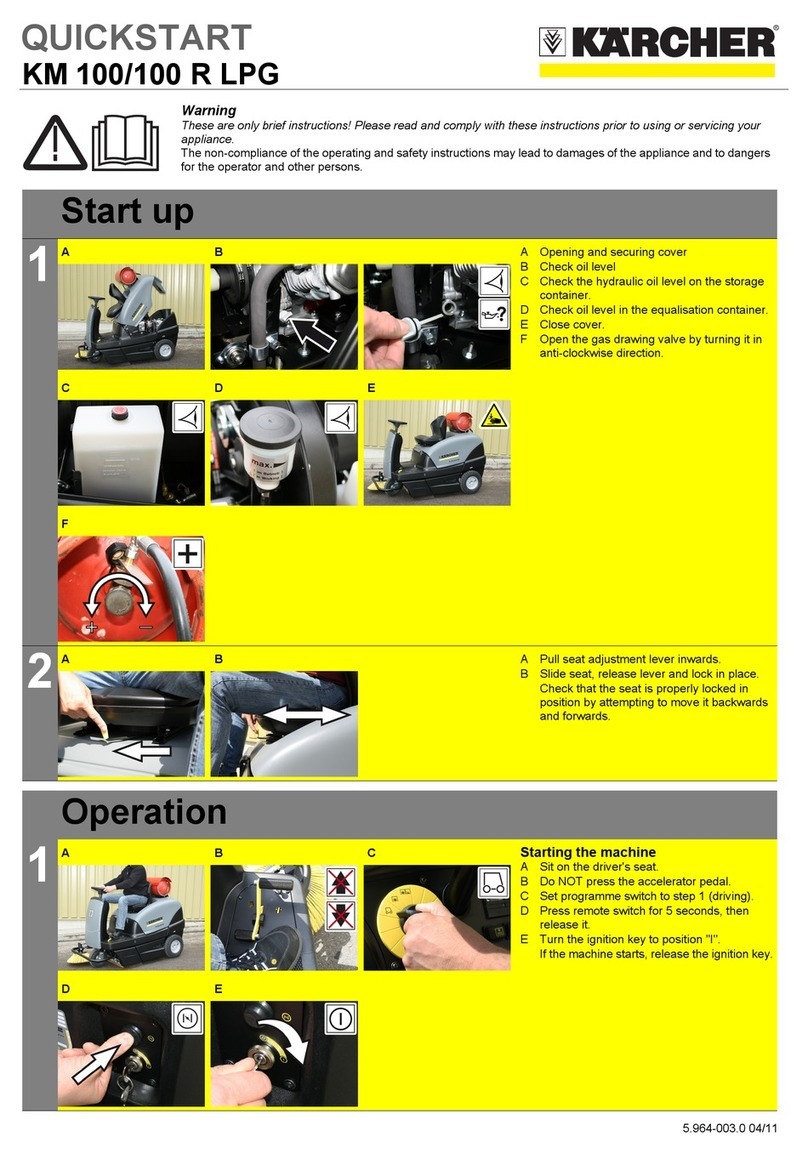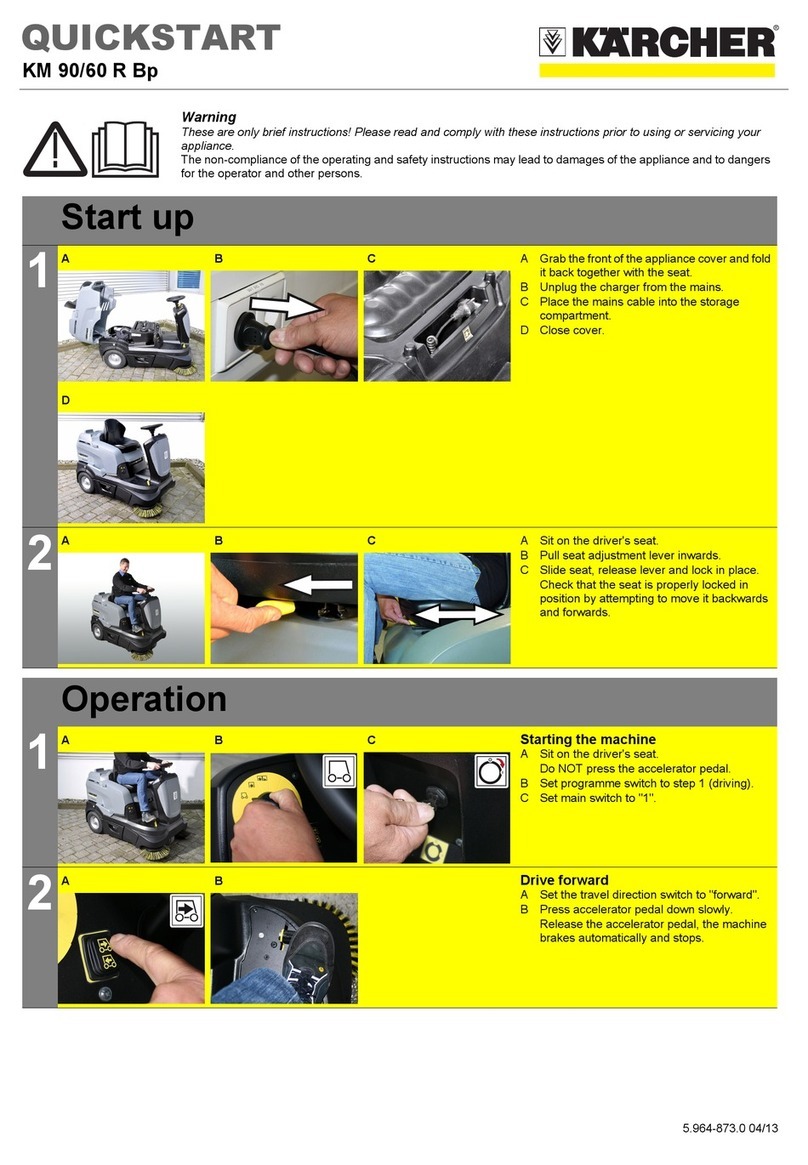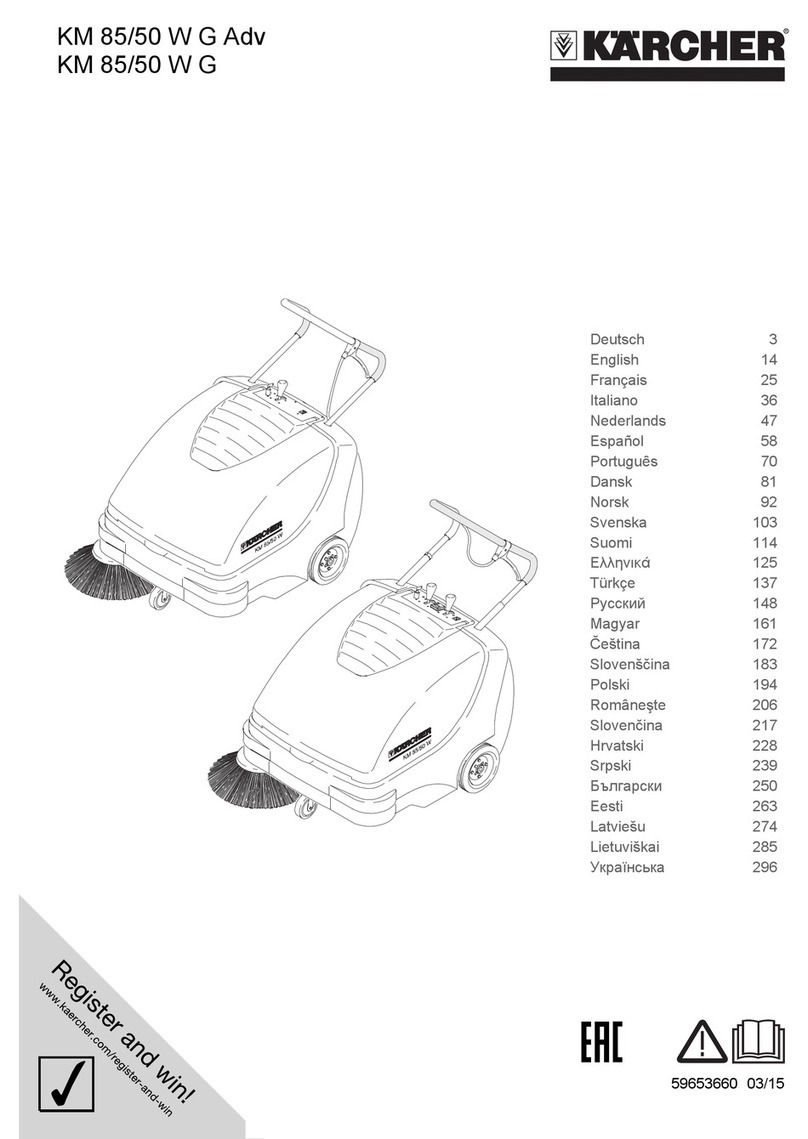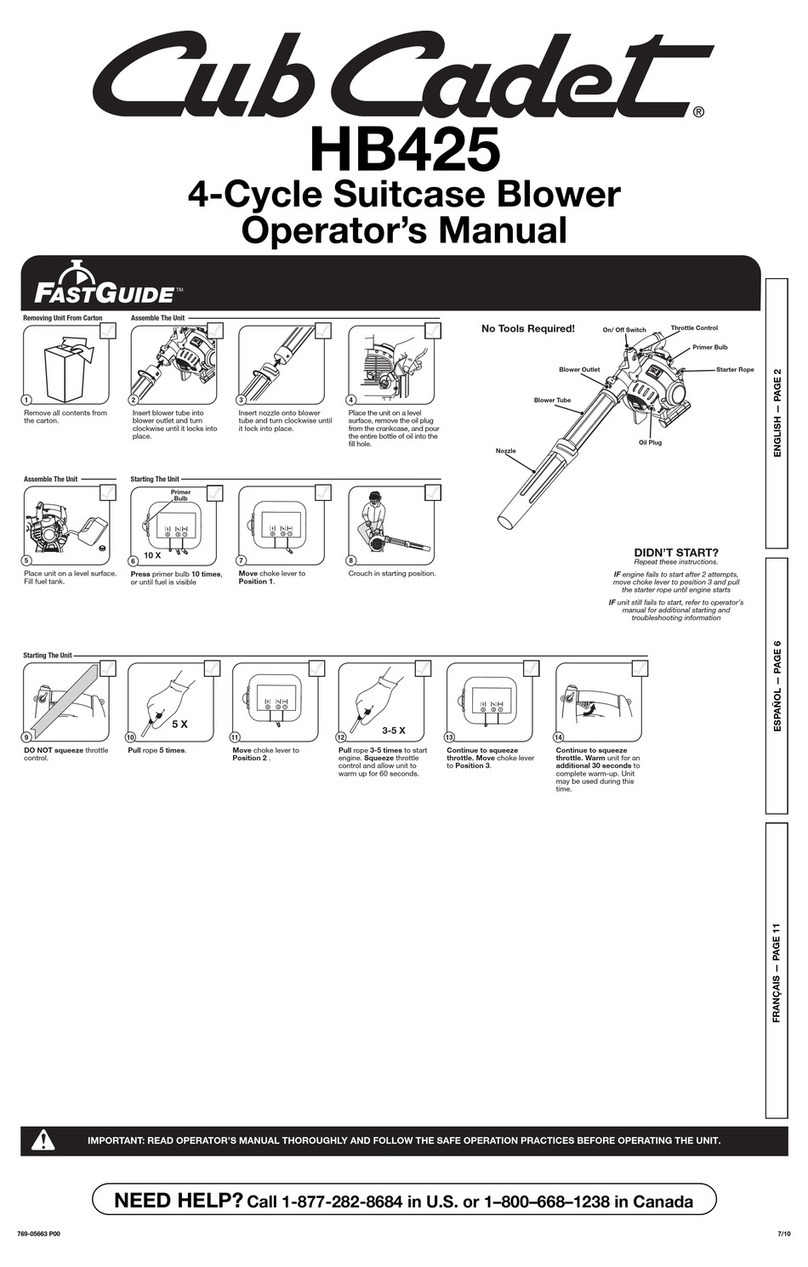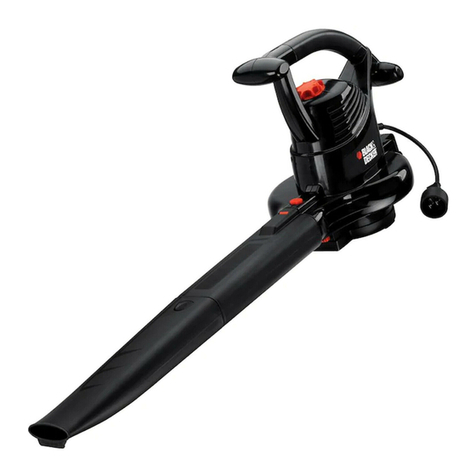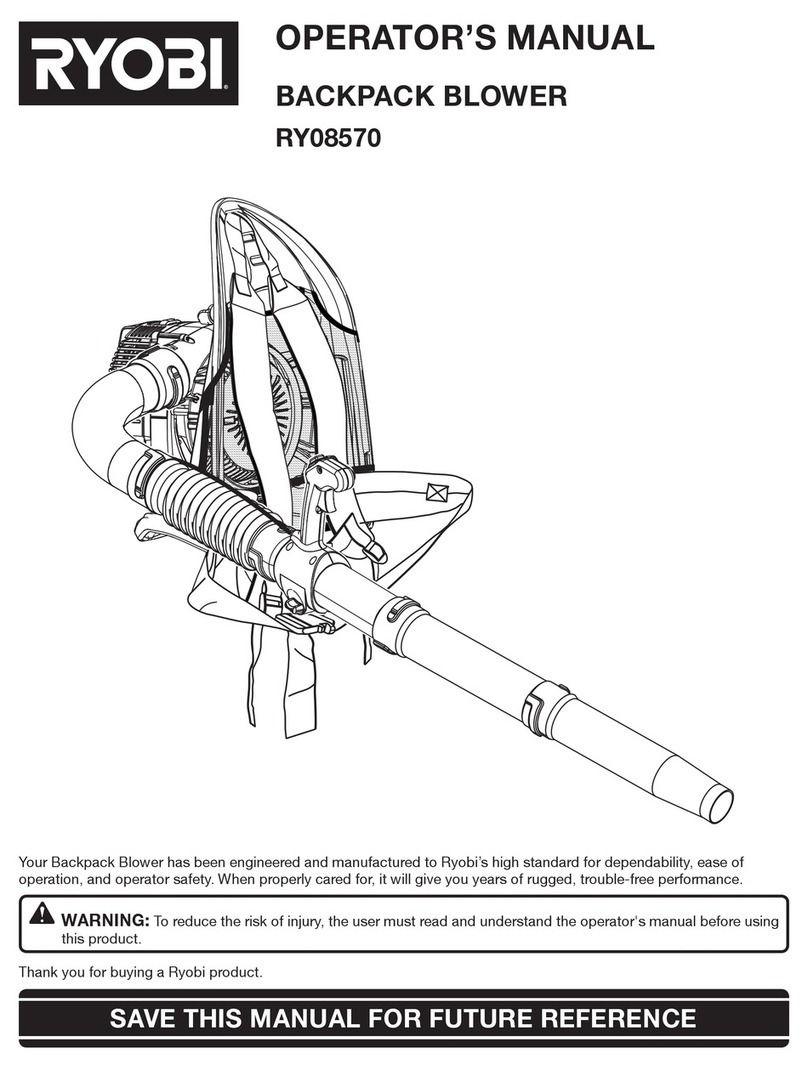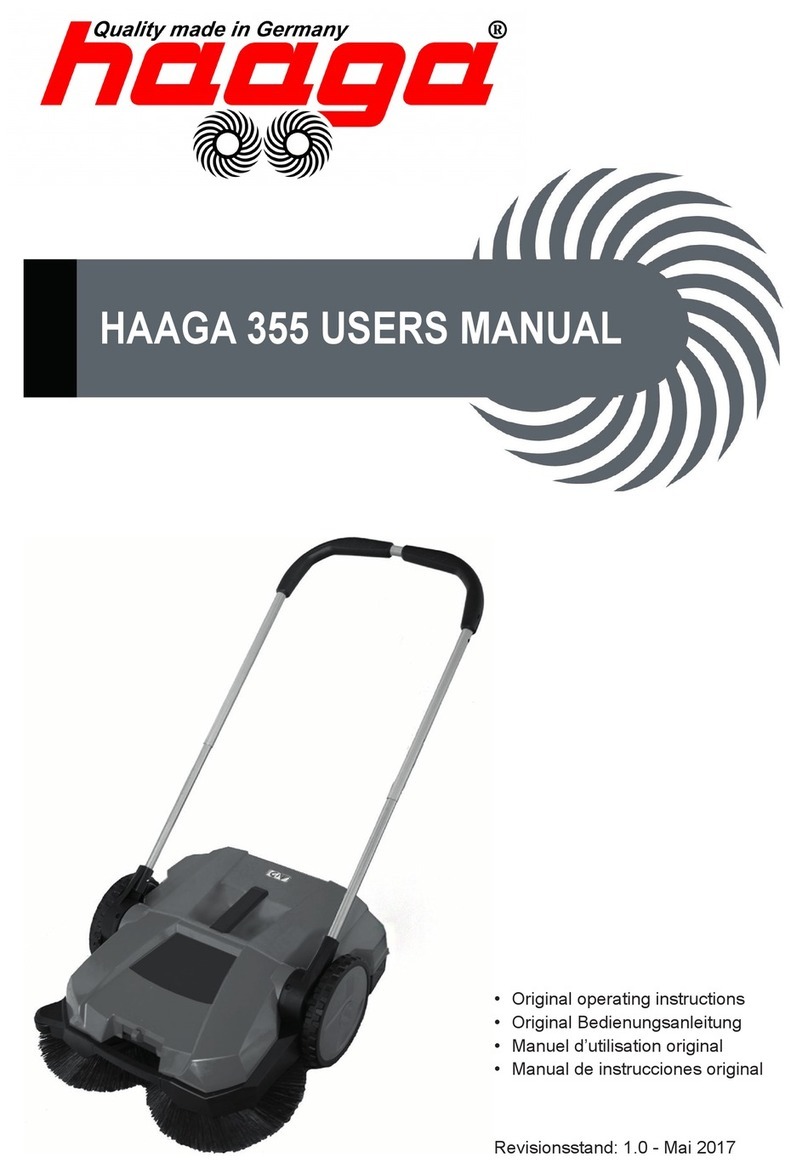English KM 100/40 W 4
FOR YOUR SAFETY!
General instructions
It is mandatory to read and
observe this prior to usin the
appliance!
♦
Notify your sales outlet if during
unpacking you detect damage that
has occurred in transit.
♦
Read the operating instructions of
your appliance prior to putting it into
operation, especially the safety
information.
♦
The danger and caution signs
attached to the appliance give
important tips on its safe operation.
♦
In addition to the instructions in the
operating instructions, general
safety- and accident
prevention-regulations from
lawgivers must be followed.
Use
♦
Prior to utilization the appliance and
its working facilities must be
checked regarding their proper
condition and that they operate
safely. It must not be used if its
condition is not faultless.
♦
No modifications permitted on the
machine.
♦
Never absorb e plosive liquids,
inflammable gases or undiluted
acids and solvents! This includes
petrol, paint thinner or fuel oil,
which can form e plosive fumes
due to the swirling suction air, in
addition acetone, undiluted acids
and solvents, since they corrode
the materials used for the
appliance.
♦
Do not sweep up/absorb burning or
smouldering objects.
♦
Only if e pressely marked is this
appliance suitable for sucking up
health-hazardous dusts. Comply
with notices concerning safety
regulations given in the operating
instructions.
♦
Suitable only for the surfaces listed
in the operating instructions.
♦
The appliance may be used on only
the areas cleared for its use by the
factory owner or a person
authorized by him.
♦
Keep clear of the danger area. Its
operation in e plosion hazardous
locations is prohibited.
♦
The following applies generally:
Keep combustible materials away
from the machine (danger of
e plosions-/fire).
Operation
♦
The rules, regulations and
stipulations applying to motor
vehicles must always be observed.
♦
The operator must use the unit in
accordance with its intended
purpose. She must adapt her mode
of operation to the local conditions
and when working with the
appliance keep a look out for third
parties, especially children.
♦
The appliance may only be used by
persons instructed in its handling or
who have proved their capability of
operating it and who are e pressely
authorized to use it.
♦
The unit must not be operated by
children and youths.
♦
To prevent unauthorized utilization
of appliances provided with an
ignition key the ignition key must be
removed.
♦
The appliance must never be left
unattended as long as the motor is
running. The operator may not
leave the appliance until the motor
is turned off, the appliance is
safeguarded against unintentional
motion, if necessary the parking
brake actuated and the ignition key
removed.
♦
On slopes the angle of inclination to
the side and in the direction of
motion must not e ceed the value
given in the operating instructions.
Transport
♦
The motor must be turned off when
the appliance is transported.
♦
To lock the parking brake.
♦
To secure the machine with tension
belts, ropes or chains.
♦
To secure the machine at the
wheels with wedges.
Maintenance
♦
Repairs may only be carried out by
approved customer service centres
or by technical personnel trained in
this field which are familiar with all
relevant safety regulations.
♦
Industrially used appliances in
changing locations are subject to
the safety inspection according to
VDE 0701.
♦
Prior to beginning work on the
electrical equipment of battery-
driven units the battery plug
connection must be unplugged or
the battery disconnected and the
battery must be disconnected in the
case of combustion engine driven
units.
♦
The unit must be switched off and,
if necessary, the ignition key
removed prior to cleaning it,
performing maintenance work on it,
replacing parts or resetting it to a
different operation.
♦
Unless e pressly permitted the unit
may not be cleaned with hose or
high-pressure water jets. (Danger
of short circuits or other
impairments).
Accessories and spare parts
♦
Only accessories and spare parts
cleared by the manufacturer may
be used. Genuine accessories and
spare parts guarantee that the
appliance can be operated safely
and trouble-free.
Battery driven appliances
♦
Warranty is valid only when you
use the batteries and charging units
recommended by Kärcher.
♦
It is mandatory to comply with the
battery manufacturer's operating
instructions. Heed the legislative
recommendations on handling of
batteries.
♦
Never leave a battery in a run down
condition but recharge it as soon as
possible.
♦
Keep the batteries always clean
and dry to prevent leaking currents.
Protect from contamination, e.g.. by
metallic powder.
♦
No tools and similar objects. to be
placed on the battery. Hazard of
short circuits and e plosion.
♦
Do not under any circumstances
work with an open flame, create
sparks or smoke near a battery or
in a battery recharging room.
E plosion hazard.
♦
Do not touch hot parts, e.g. drive
motor (danger of burns).
♦
Take care when handling
accumulator acid. Heed the
relevant safety regulations!
♦
Used batteries are to be disposed
of in an environmentally friendly
way, according to
EC-guideline 91/157 EWG.
Tip hazard if slope too steep!
♦
The machine could topple over
when driving and turning on slopes.
♦
In direction of travel only negotiate
gradients up to 15 %
♦
At right angles to direction of travel
only negotiate gradients up to
15 %.
Open/close the unit‘s cover
On opening cover, make sure cover
latch engages.
The lock of the unit’s cover prevents it
from slamming shut again.
Lift cover latch before closing cover.
Power drive
The engine takes appro . 3...4 s to
run down after being shut off.
Never enter operating area during
this period!
FOR PROTECTION OF OUR
ENVIRONMENT
Caution, exhausted batteries can
cause pollution!
♦
Do not dispose of e hausted
batteries as ordinary household
garbage.
♦
All plastic materials are designated
for sorted recycling.
♦
Ensure environmentally compatible
disposal.




